|
What is the difference between one of my custom cut gemstones, and a typical commercially cut, or native cut gemstone? Here I will show you some pictures of some commercially cut stones so you can see for yourself.
Remember, not ALL commercially cut stones are this bad, but these stones show a variety of the most common problems found in commercial stones. All of these stones were sold by a jeweler as “investment quality” stones. Just imagine what he’d use in his jewelry if these ones are “investment grade.” Any decent jeweler wouldn't be caught dead selling jewelry with stones like this, but there are many people out there looking for someone to buy stuff like this. I'm sure you've heard the "theres a sucker born every minute" saying. That definitely applies here.
When buying jewelry, or loose gemstones you should try to learn what to look for to make sure you are making a wise investment. I'm sure most of you wouldn't go to a used car dealer and buy the first car you see with a really pretty color paint job, even if it was hanging off the back of a tow truck. The same applies to jewelry.... Take a close look at what you are getting, and you can save yourself a lot of trouble down the road. Take some time to look down through this page, and then I challenge you to take a close look at your favorite jewelry. You might be surprised at what you find!
First, we’ll start off with this Pink Spinel
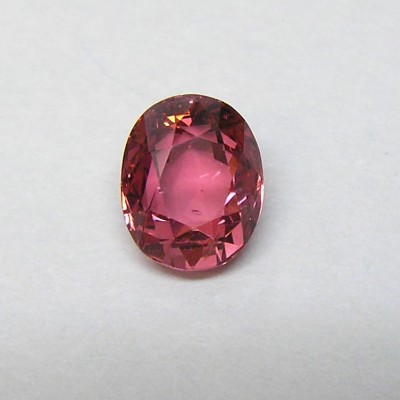
Not too bad you say? It has a nice color, and it looks OK at a glance. let’s take a closer look...
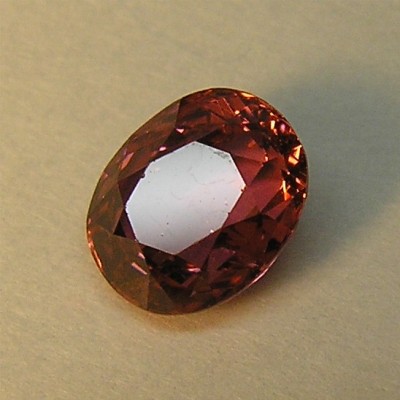
Here you can see that the stone isn’t quite a “perfect” oval, but that is probably not something everyone will notice. The things you start to see here are some scratches and chips on the stone near the table (the large flat facet in the center.)
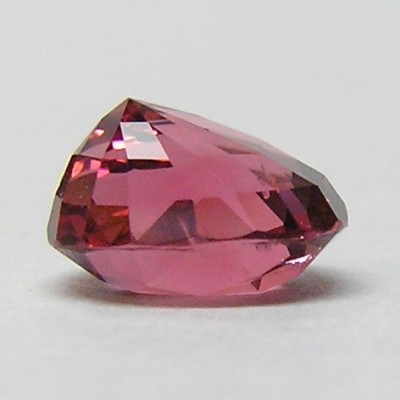
WOW!!! Look at that! I turned the stone upside down to get a good picture of the pavilion and it is WAY off center. The point of the pavilion should be in the center of the stone, not way off to one side. You can also see that the crown is deeper on one side than the other, so the entire stone sits crooked even when upside down…
This stone is also what is called “belly cut” Look at the angle of the facets nearest the girdle on the pavilion. You can see that when the stone is face up, the facets immediately below the girdle are at a very steep angle. This is done for maximum weight retention when cutting a stone, but it diminishes the overall beauty of the stone, and makes it difficult to set in jewelry. If you buy a stone like this that is Belly cut, and have it re-cut to proper proportions you will lose a lot of weight on the finished stone because of all the waste material still left on this stone. A properly cut stone will always look better than a belly cut stone, even though it does weight less…. And a properly cut stone of the same weight will be much larger in size too. Why have a 3ct stone that is belly cut so bad that it’s only the size of a 1ct stone when you look at it in the finished jewelry? And that’s not all that is wrong with this stone
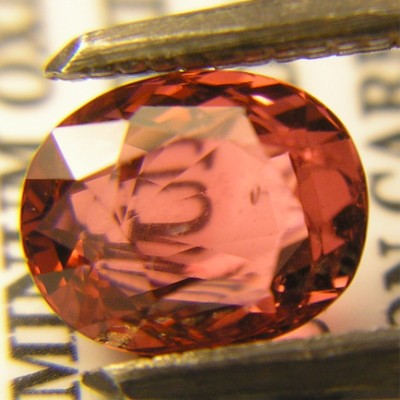
This stone also has a problem with “windowing” as you can see in the picture, you can see right through the bottom of the stone. You can see that I placed some text behind the stone and you can clearly see it through the pavilion when looking at the stone face up. You should never be able to see straight through the bottom of a well cut stone. If this stone were set in a ring, you would be able to look at the stone in the ring, and you could see your finger right through the bottom of the stone. If you wanted to see your finger there why bother putting a stone in the ring?
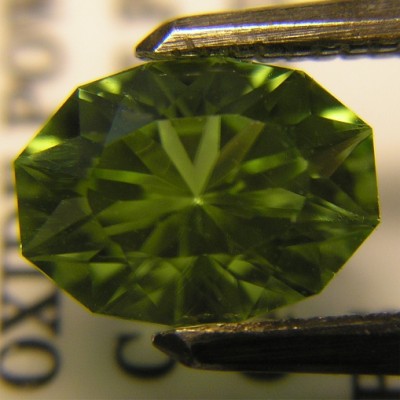
Now look at this Peridot. I cut this stone to the correct angles, and there is no window on the bottom of the stone. Note that I also have text behind this stone, and you can not see it through the stone. This picture was taken with very little light, so it appears darker than it actually is. I did that on purpose to show that the window is not there. with more light this stone has so much flash that it practically blinds the camera when taking a picture. I have a better picture of this stone in My Gallery
Next, we’ll take a look at some emeralds since they are quite popular, and almost always poorly cut because they are so valuable and cutters try to retain weight as possible, and don’t usually worry about the optical performance of the stone...
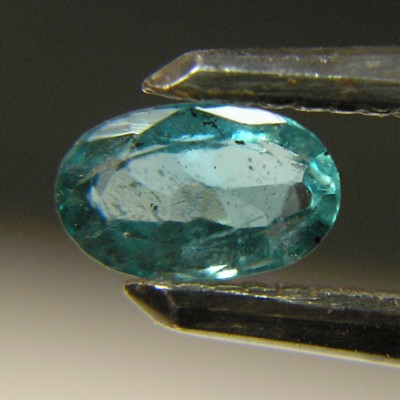 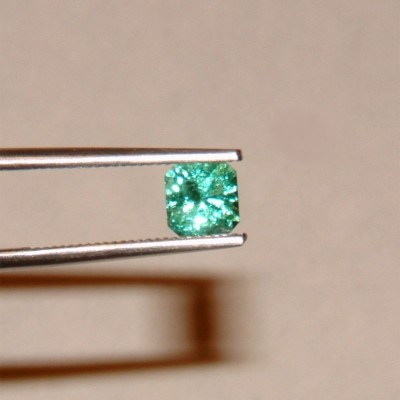
OK, on the left you can see this is not the cleanest stone possible, but emerald is very rare completely clean… what we are looking at here is the cutting, not the stone itself. The stone has a nice color, but really doesn’t have much life to it as you can see in this picture. Many of the facets on the crown do not meet correctly. On the right is a picture of an emerald I cut showing how much life there should be in a well cut stone. This stone also has some flaws(as most emeralds do) but it looks great in comparison to the stone on the left. Below is a picture of an oval Peridot I cut that shows how the meets on the facets *should* look.
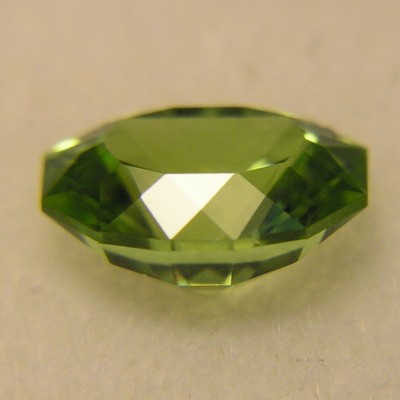
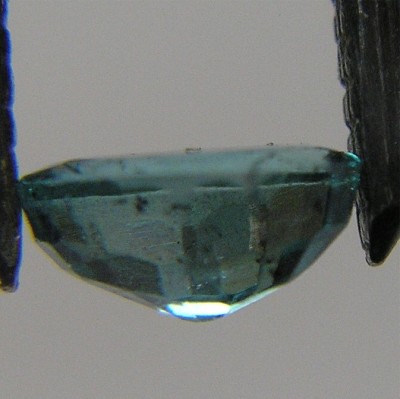
Here you can see this stone is also belly cut to be as heavy as possible. The pavilion is very deep, and the crown is almost flat. You can also see that the girdle is thicker on the left than it is on the right.
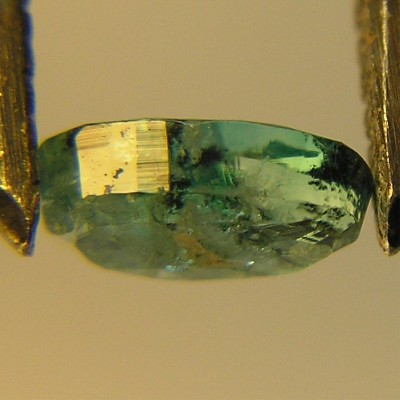
Here is a side view of another oval emerald that is very poorly cut. The girdle is almost razor thin, and the pavilion is extremely fat near the girdle. A stone like this would not be easy for any jeweler to set. You can also see polishing marks on some of the facets here. These are caused by not taking the time needed, or using fine enough grits and polishes to create a perfectly flat facet. Also note how shallow the facets are on the bottom of the pavilion is on this stone. Stones cut like this always have very bad windows.
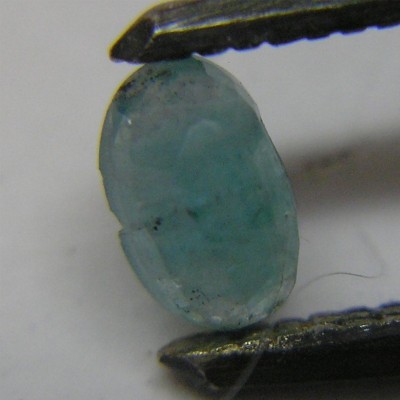
This emerald is a real bad example of a commercially cut oval. I think I’d have to call this one more of a “jelly bean” shape. Also note the chip missing out of the girdle on the left. The stone was sold like this by a jeweler!!!
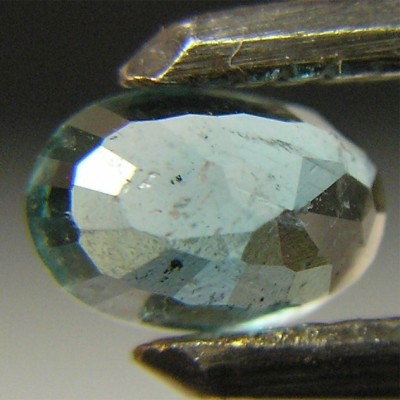 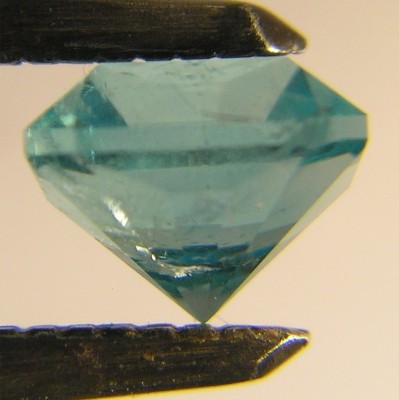
The picture on the left shows the pavilion of another emerald showing an off-center culet (where the pavilion comes to a point), and many facets that don’t properly meet like they should. They just seem to be put anywhere on the stone that they would fit. On the right is a side view of an emerald I cut showing that the pavilion is well centered, the girdle is even and all of the facets come to a nice point on the pavilion.
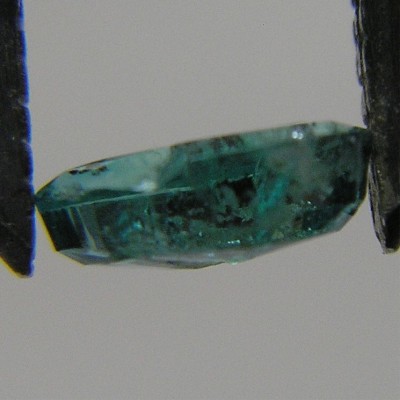
Here is a side view of another emerald that has an extremely fat girdle, and apparently ran out of emerald before they finished cutting the pavilion so they just made the pavilion VERY shallow. Another stone that is difficult to set, and surely has a horrible window in the bottom.
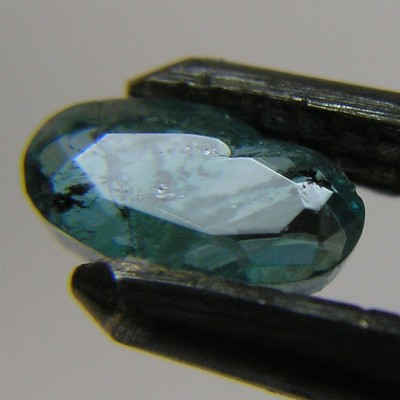
Here is another picture of that shallow emerald. Here you can see right through the bottom of the stone, and there is a huge piece of the stone missing right next to the table on the stone. You can also see misplaced facets and some polishing marks on the table if you look closely.
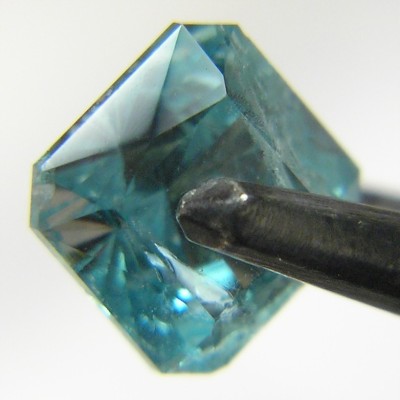
Here is a picture of an Emerald I cut showing that the facets are well
polished, and the facets meet properly at the girdle. This picture
also shows that the girdle is uniform all the way around the stone.
Take a look at this Rhodalite garnet
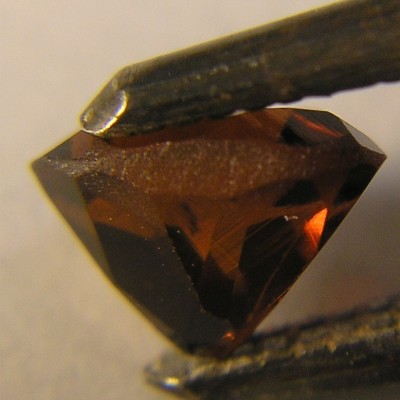
It’s pretty easy to see what’s wrong here… the pavilion is cut WAY too deep on this stone, there are polishing marks, a razor thin girdle on the left edge, and an extremely fat, unpolished girdle on the visible side of the stone.
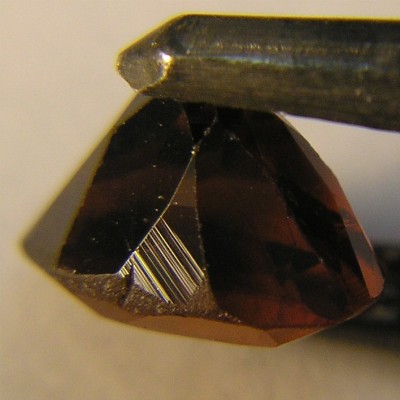 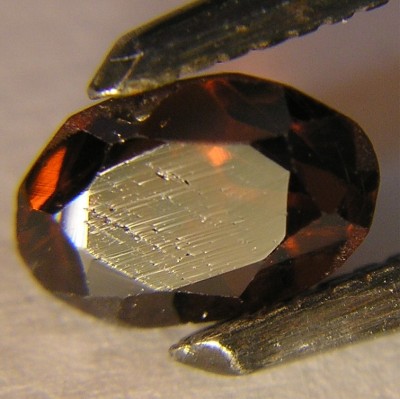
Here you can also see a facet on the same stone that was cut, but never fully polished, a large crack in the stone, and some serious polishing marks. The picture on the right shows the table on another Rhodolite garnet with some severe scratches left unpolished. You can also see the uneven outline of the stone, and many misplaced facets.
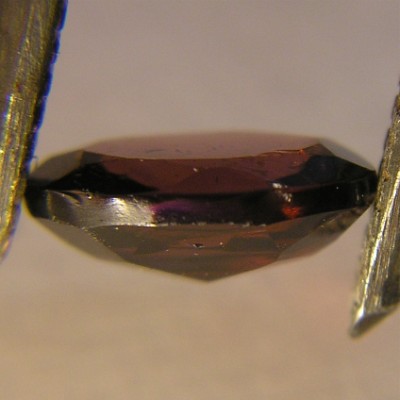 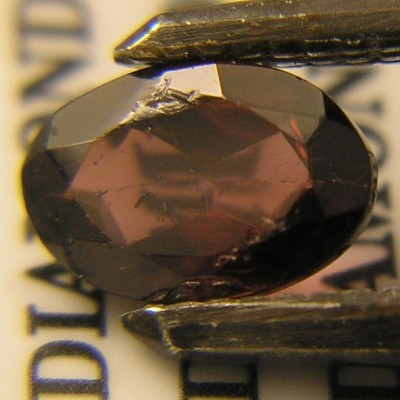
This is another Rhodolite garnet with a very fat girdle, and an extremely shallow pavilion. This stone has a very bad window. A window like this is also often called a “bow-tie” because of the shape of the window. These are often seen in ovals and marquise stones.
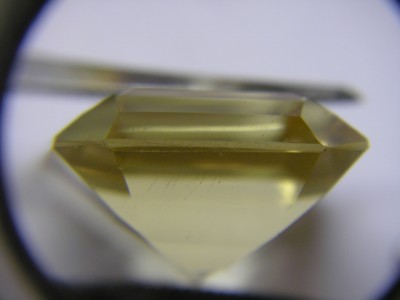 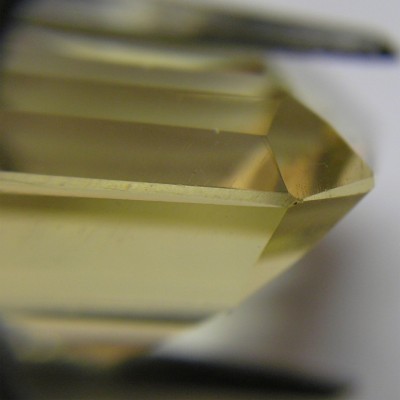
Look at the girdle on this huge Citrine… what a shame. Its uneven, a little too thick, and only partially polished. This stone is very large and would look fantastic is properly cut, unfortunately that was not done. Below is a picture of a created Pink Sapphire I cut showing the facets meet properly, and the girdle is even all the way around the stone. there is really no comparison here.
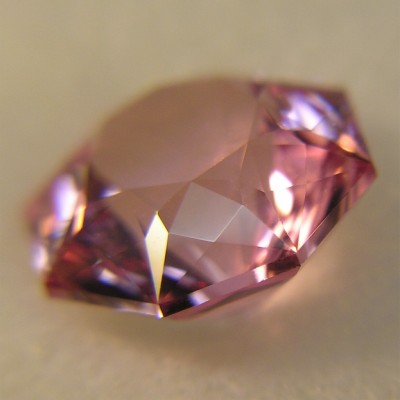
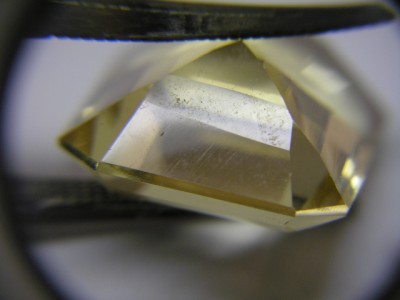
The facets on the pavilion were not properly polished, and are not properly aligned.
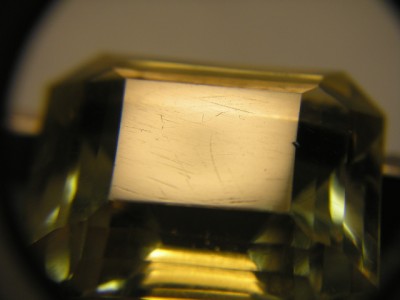
There are polishing marks on almost every facet here, including the table… the first part you see when you look at the stone.

Look at the window on this stone!!! It's hard to believe anyone would want to wear something that you can see right through like this.
Now take a close look at your favorite jewelry and you might be suprised at what you find.
|
